Tell us about your approach to photography. How did it all begin? What are your memories of your first shots?
Tomasz Laptaszynski (TL): My first link to photography was my father – he gave me practice and experience. At some point our relationship was built mainly around our time spent together in the darkroom, focusing on acquiring skills. I had my own Zorka or Smiena (I destroyed a few of them), my father always carried Practica and slide, which was an expensive camera then and my biggest dream. I don’t remember him ever wanting me to focus on anything – he just gave me a tool and let my intuition rule. I could have taken my first photo unconsciously, at a very early age. I don’t remember it, but I remember making my first whole film (it actually appeared these were three films which I connected together in my memory) – presenting family, dog, my best friend.
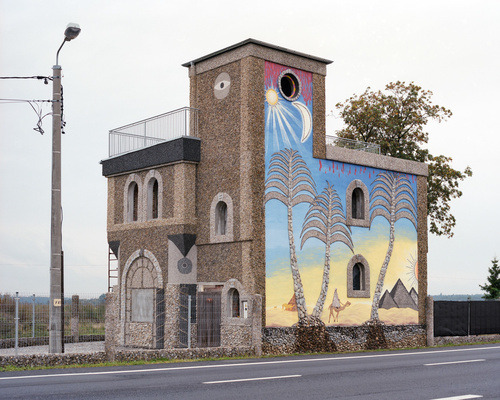 © Tomasz Laptaszynski, ‘Antiquity Now’
© Tomasz Laptaszynski, ‘Antiquity Now’How did your research evolve with respect to those early days?
TL: Photography started to absorb me more when I discovered lomography and got involved in a relationship with imperfect equipment made of plastic and with using poor films. Then I started working on animated films, documenting shoots and taking DIT jobs. I took part in making of “The City Sails On” 2009 produced by Se-ma-for, which is a story about my home city Lodz. Now I continue this direction while working on “The Wizard of U.S.” by Balbina Bruszewska & WJTeam, which will be finished this year. I also got fascinated by climbing photography, which occupied me for a long time.
Tell us about your educational path. Is it true that you attended workshops organized by Sputnik Photos? Do you think these events influenced your personal work and the specific aesthetic you use?
TL: For a few years I studied history, specializing in ancient history, which obviously has a big influence on topics I take up today. On the other hand, a very important moment in my photographic educational path was taking part in workshops organised bySputnik Photos in 2012. It was really quick, but spent in an extremely inspiring company! For instance, I met there Warzyniec Kolbusz who recently rocks with his “Sacred Defence” and Karolina Gembara, who presents a very interesting view on contemporary India. During that time I was influenced more by the way of working and attitude towards photography than aesthetics. This was what they instilled in me for sure.
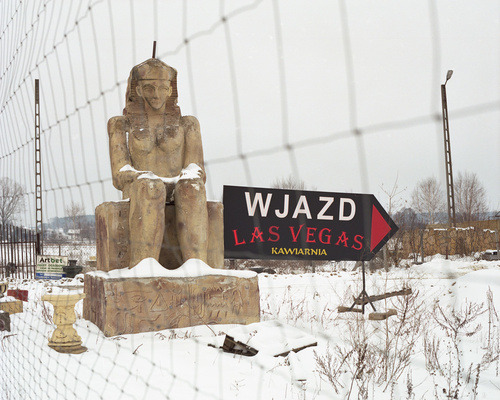 © Tomasz Laptaszynski, 'Antiquity Now’
© Tomasz Laptaszynski, 'Antiquity Now’ How would you describe your personal research in general?
TL: I like to say that I deal with archaeology of the present. I show fragments of reality through traces we leave. Recently I avoid people on pictures. I don’t want to concentrate on a human being and to see everything from his/her perspective and that is always my first thought. I don’t know how long it takes before I change my mind again, but the two cycles I’m working on: 'Antiquity Now’ and 'No Name Poland'are definitely the result of this attitude.
Your latest project 'Antiquity Now’ focuses on rather peculiar usage of antique references in Polish architecture and popular culture. Could you tell us more about this series?
TL: The idea of this project is rooted in what my professor, Maciej Kokoszko, instilled in me – very trivial but true – that history never totally passes away and is always around us. I don’t mean great monuments, rather everyday usage of antique elements, very often not fully conscious. This attitude linked with my photographic eye constitutes “Antiquity Now”.
Why, in your opinion, Poles show such a huge sentiment to antiquity? These lands were never a part of the Roman Empire and that makes this issue even more surprising.
TL: Not only of the Roman Empire, but also of Greece and Middle East, and Egypt at the top. Maybe because of lack of historical roots in the centre of civilisation we have such a fancy for making up for the loss. In the end, when you read Polish chronicles from the Middle Ages, you may notice that Poles are diluted descendants of Alexander the Great. 45 years of our history (communism time) during which travelling abroad was difficult and there was no place and/or means for individualism in Polish architecture just adds to this. After changes in 1989, when the barriers were broken and everyone could build what they wanted, the uncontrolled started to dominate Polish public space.
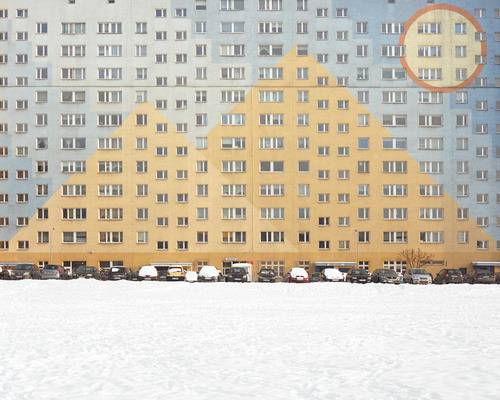 © Tomasz Laptaszynski, 'Antiquity Now’
© Tomasz Laptaszynski, 'Antiquity Now’ The other series you are currently working on is 'No name Poland’, which appears to be a very specific investigation of the Polish urban and suburban landscape. Tell as more about this project.
TL: This series is self-defining all the time. It is made when the opportunity occurs and still lacks proper explanation. At the moment I think I want to find some basic landscape, deprived of many elements which are everyday objects and cause distraction. When you reject them, disintegration and decay remains, crooked walls of the chimneys and antennas leaning all sides. This is an attempt of catching the essence of Polish landscape, deducting from it modernity and all changes it underwent during last years.
What kind of photography do you like to look at? Could you list a few names of photographers that inspire you?
TL: I’m very inspired by Peter Bialobrzeski, Todd Hido and Aleksander Gronsky. I watch their photos again and again, they haunt me. Recently, I also dig a lot in Fototeka archive, which presents photos from film sets. It serves the history of Polish film seen from behind the scenes, many unknown photographers are there, I guess is just a matter of time. Besides, I love works of Shaun Tan, e.g. “Arrival”. It is a perfectly told story devoid of words, presented only in pictures. Wonderful imagination!
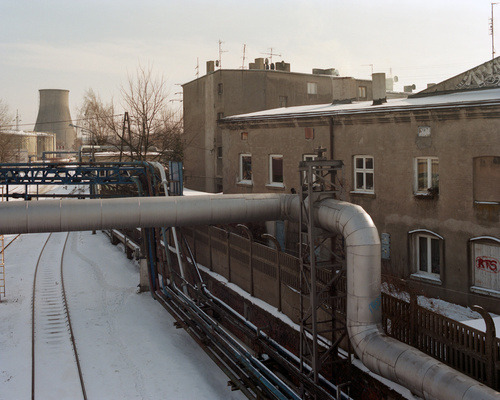 © Tomasz Laptaszynski, 'No Name Poland’
© Tomasz Laptaszynski, 'No Name Poland’ Any photobooks that you recommend?
TL: Just recently I’ve reached for the “Black Passport” by Stanley Green again. I still think this is a masterpiece in every sense. From time to time I like to go through Alex Webb’s “The Suffering of Light”, as it feels a bit like my favorite childhood band’s ‘the greatest hits’ album. Moreover, the rigidity of Koudelka’s “Gypsies” and perfection of the “Pastoral” book by Gronsky is what I like to look at.
Could you comment on the Polish photography scene?
TL: In my opinion Polish photography is doing quite well. It is visible especially if we take a look at the results of international contests. I wish that more photographers had undertaken projects that are complex and in a way total in their assumptions. I’d like to see more projects like “Stocznia” by Michał Szlaga and “Święta Wojna” or “There’s No Such Thing As an Innocent Eye” by Wojtek Wilczyk. In fact, there are photographers working on this kind of projects, but on a smaller scale. Therefore there is a chance for my wish to come true in the future.
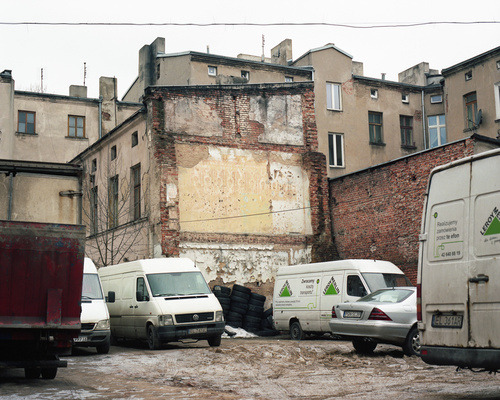 © Tomasz Laptaszynski, 'No Name Poland’
© Tomasz Laptaszynski, 'No Name Poland’Any plans for the future? Do you think of turning your 'Antiquity Now’ project into a photobook at some point?
TL: In the nearest future I plan to finish shooting 'Antiquity Now’ and start selecting the material. It will take a while. Publishing a book is a natural way to present one’s work, but I need to take my time and let the project grow till this shape.
---
LINKS
Tomasz Laptaszynski
Poland
share this page